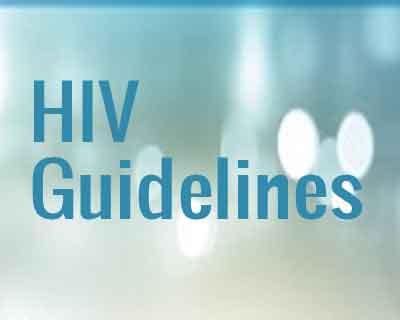- Home
- Editorial
- News
- Practice Guidelines
- Anesthesiology Guidelines
- Cancer Guidelines
- Cardiac Sciences Guidelines
- Critical Care Guidelines
- Dentistry Guidelines
- Dermatology Guidelines
- Diabetes and Endo Guidelines
- Diagnostics Guidelines
- ENT Guidelines
- Featured Practice Guidelines
- Gastroenterology Guidelines
- Geriatrics Guidelines
- Medicine Guidelines
- Nephrology Guidelines
- Neurosciences Guidelines
- Obs and Gynae Guidelines
- Ophthalmology Guidelines
- Orthopaedics Guidelines
- Paediatrics Guidelines
- Psychiatry Guidelines
- Pulmonology Guidelines
- Radiology Guidelines
- Surgery Guidelines
- Urology Guidelines
Exposure To HIV- Hospital Infection Prevention And Control Guidelines

National Centre For Disease Control, Directorate General of Health Services, Ministry of Health & Family Welfare, Government of India came out with Hospital Infection Prevention And Control Guidelines. Following are its major recommendations For Exposure To HIV.
Please see NACO 2007 Antiretroviral Therapy Guidelines for HIV Infected Adults and Adolescents Including Post-exposure Prophylaxis
Six steps are indicated for managing occupational exposures to HIV.
1. Manage the exposure site
a) Do remove gloves, if appropriate
b) Do wash the exposed site thoroughly with running water
c) Do irrigate with water or saline if eyes or mouth have been exposed
d) Do wash the skin with soap and water
e) Do not panic
f) Do not put the pricked finger in the mouth
g) Do not squeeze the wound to bleed it
h) Do not use bleach, chlorine, alcohol, betadine, iodine, or other antiseptics/detergents on the wound
2. Establish eligibility for PEP
a) Three categories of exposure can be described based on the amount of blood/fluid involved and the entry port. These categories are intended to help in assessing the severity of the exposure but may not cover all possibilities.
i) Mild exposure: mucous membrane/non-intact skin with small volumes.
ii) Moderate exposure: mucous membrane/non-intact skin with large volumes OR percutaneous superficial exposure with solid needle
iii) Severe exposure: percutaneous with large volume
b) A baseline rapid HIV testing should be done before starting PEP. Initiation of PEP where indicated should not be delayed while waiting for the results of HIV testing of the source of exposure. Informed consent should be obtained before testing of the source as per national HIV testing guidelines.
c) The exposed individual should be assessed for pre-existing HIV infection intended for people who are HIV negative at the time of their potential exposure to HIV. Exposed individuals who are known or discovered to be HIV positive should not receive PEP. They should be offered counselling and information on prevention of transmission and referred to clinical and laboratory assessment to determine eligibility for antiretroviral therapy (ART).
3. Counsel for PEP
a) Exposed persons (clients) should receive appropriate information about what PEP is about and the risk and benefits of PEP in order to provide informed consent. It should be clear that PEP is not mandatory.
b) There are two types of PEP regimens
i) Basic: 2-drug combination
ii) Expanded: 3-drug combination
c) The decision to initiate the type of regimen depends on the 63 type of exposure and HIV sero-status of the source person
d) PEP must be initiated as soon as possible, preferably within 2 hours. All clients starting on PEP must take 4 weeks (28 days) of medication.
e) If the exposed person is pregnant, the evaluation of risk of infection and need for PEP should be approached as with any other person who has had an HIV exposure. However, the decision to use any antiretroviral drug during pregnancy should involve discussion between the woman and her health-care provider (s) regarding the potential benefits and risks to her and her fetus.
Data regarding the potential effects of antiretroviral drugs on the developing fetus or neonate are limited. There is a clear contraindication for Efavirenz (first 3 months of pregnancy) and Indinavir (prenatal).
In conclusion, for a female HCP considering PEP, a pregnancy test is recommended if there is any chance that she may be pregnant. Pregnant HCP are recommended to begin the basic 2-drug regimen, and if a third drug is needed, Nelfinavir is the drug of choice.
4. Laboratory evaluation
f) When offered HIV testing, the exposed person should receive standard pre-test counselling according to the national HIV testing and counselling guidelines, and should give informed consent for testing. Confidentiality of the test result must be ensured. Do not delay PEP if HIV testing is not available.
g) Recommended baseline laboratory evaluations within 8 days of exposure.
i) In persons taking PEP: HIV, HCV, anti-HBs, complete blood count, transaminases
ii) In persons not taking PEP: HIV, HCV, anti-HBs.

Disclaimer: This site is primarily intended for healthcare professionals. Any content/information on this website does not replace the advice of medical and/or health professionals and should not be construed as medical/diagnostic advice/endorsement or prescription. Use of this site is subject to our terms of use, privacy policy, advertisement policy. © 2020 Minerva Medical Treatment Pvt Ltd